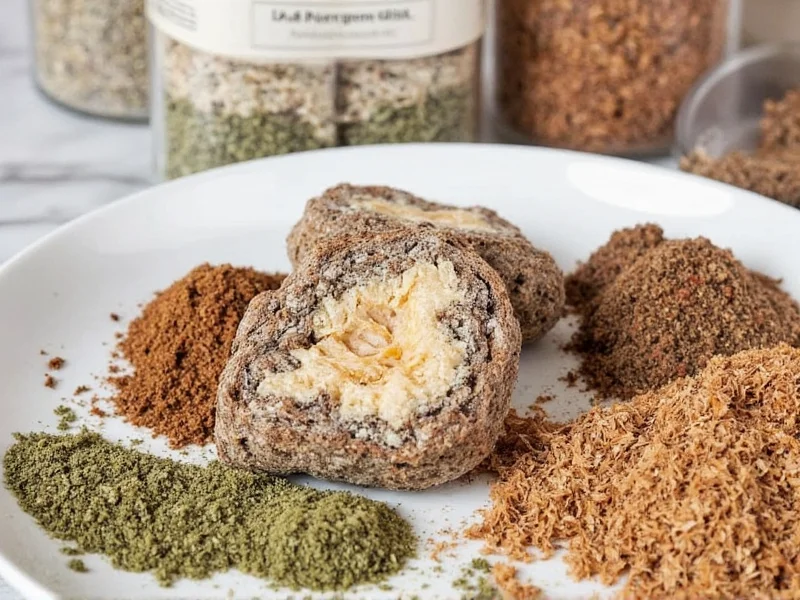Understanding All Purpose Seasoning: Your Culinary Swiss Army Knife
When you're standing in front of your stove wondering how to elevate a simple meal, all purpose seasoning becomes your most reliable kitchen companion. This carefully balanced spice blend eliminates the guesswork of combining individual spices while delivering consistent, restaurant-quality results across countless recipes.
What Makes a Seasoning Truly "All Purpose"?
The magic of effective all purpose seasoning lies in its thoughtful composition. Unlike single-note seasonings, these blends contain multiple complementary ingredients that work synergistically to enhance rather than dominate flavors. The best all purpose seasoning for beginners provides complexity without overwhelming heat or distinctive flavors that might clash with certain dishes.
| Common Ingredients | Flavor Contribution | Typical Percentage |
|---|---|---|
| Salt | Flavor enhancer, texture contributor | 40-50% |
| Garlic powder | Savory depth, umami notes | 15-20% |
| Onion powder | Sweetness, aromatic complexity | 10-15% |
| Paprika | Color, mild sweetness, subtle heat | 8-12% |
| Black pepper | Sharpness, mild heat | 5-8% |
| Additional herbs | Complexity, freshness notes | 3-5% |
All Purpose Seasoning vs. Similar Blends: Key Differences
Many home cooks confuse all purpose seasoning with seasoned salt or garlic salt. While similar, these blends serve different culinary purposes. Seasoned salt typically contains more salt and fewer complementary spices, making it less versatile for delicate dishes. Garlic salt focuses primarily on garlic flavor with salt, lacking the balanced complexity of true all purpose seasoning.
Understanding these distinctions helps you select the right product for your cooking needs. The most versatile all purpose seasoning ingredients list will feature multiple complementary spices rather than focusing on just one dominant flavor profile.
Practical Applications: Where All Purpose Seasoning Shines
Knowing how to use all purpose seasoning in cooking transforms ordinary meals into extraordinary experiences. This blend excels in applications where you want consistent flavor enhancement without the complexity of measuring multiple individual spices.
Meat Preparation
Rub chicken, beef, or pork with all purpose seasoning before cooking for evenly distributed flavor. The salt content helps form a beautiful crust while the spices penetrate the meat during cooking. For grilled meats, apply 30 minutes before cooking to allow flavors to meld.
Vegetable Enhancement
Toss roasted vegetables with olive oil and all purpose seasoning before baking. The blend's balanced profile complements rather than competes with natural vegetable flavors. Root vegetables particularly benefit from this treatment.
Soup and Sauce Base
Add to soups, stews, and sauces during the sauté phase to build flavor depth. The dried spices in all purpose seasoning release their oils when heated in fat, creating a flavor foundation that single-ingredient seasonings can't match.
Creating Your Own Homemade All Purpose Seasoning
While store-bought options work well, crafting your own homemade all purpose seasoning recipe gives you complete control over ingredients and flavor balance. This approach eliminates additives and allows customization to your taste preferences.
Basic Homemade Recipe
Combine these ingredients in a glass jar and shake thoroughly:
- ¼ cup fine sea salt
- 2 tablespoons garlic powder
- 2 tablespoons onion powder
- 1½ tablespoons paprika
- 1 tablespoon black pepper
- 1 teaspoon dried thyme
- 1 teaspoon dried oregano
- ½ teaspoon cayenne pepper (optional for heat)
Store in an airtight container away from light and heat. Properly stored, your blend will maintain peak flavor for 6-8 months. The beauty of this recipe is its adaptability—reduce salt for low-sodium diets or increase paprika for more color and sweetness.
Pro Tips for Maximizing Flavor Impact
Mastering how to use all purpose seasoning effectively requires understanding timing and application methods:
- Layer flavors: Apply seasoning at multiple cooking stages—during preparation, cooking, and finishing
- Avoid high heat exposure: Add near the end of cooking for delicate dishes to preserve volatile flavor compounds
- Balance salt content: Remember most blends contain significant salt—taste before adding additional salt
- Create finishing blends: Mix all purpose seasoning with olive oil for a quick finishing sauce
Storage and Shelf Life Considerations
Proper storage maintains the potency of your all purpose seasoning. Keep it in an airtight container away from direct sunlight and heat sources. The ideal storage temperature is below 70°F (21°C). Whole spices last longer than ground, but since all purpose seasoning uses ground ingredients, plan to replace your blend every 6-12 months for optimal flavor.
Moisture is the enemy of spice blends—never store near the stove or dishwasher where humidity fluctuates. If your seasoning loses its aroma or appears discolored, it's time for a fresh batch.
Common Substitutions When You've Run Out
Don't let an empty container stop your cooking momentum. When you need a substitute for all purpose seasoning, combine equal parts garlic powder, onion powder, and paprika with half as much black pepper. For salted versions, add salt to taste (about 2 parts seasoning blend to 1 part salt).
For dishes where salt content matters, consider making a salt-free version by omitting salt from your substitute blend and adjusting seasoning at the end of cooking. This approach gives you more control over sodium levels while maintaining complex flavor.
Final Thoughts on Culinary Versatility
All purpose seasoning represents one of cooking's most valuable time-savers without sacrificing flavor complexity. By understanding its composition and proper application, you can consistently produce well-seasoned dishes that impress without requiring advanced culinary skills. Whether you're a beginner cook or experienced chef, keeping this versatile blend in your pantry ensures you're always prepared to transform simple ingredients into memorable meals.











 浙公网安备
33010002000092号
浙公网安备
33010002000092号 浙B2-20120091-4
浙B2-20120091-4